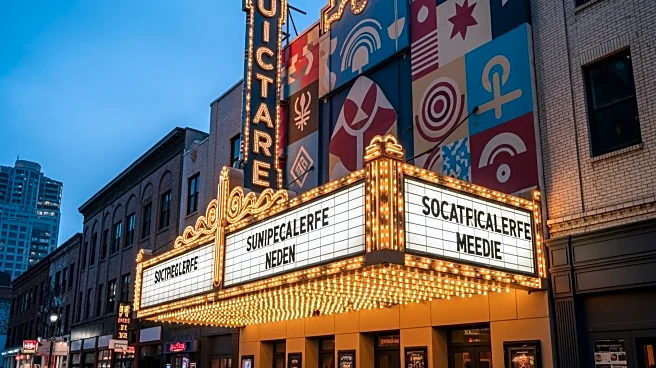What's Happening?
The horror sequel 'Black Phone 2' has opened at number one, introducing a new generation to the iconic music of Pink Floyd, specifically 'Another Brick in the Wall, Pt. 1.' The film, directed by Scott Derrickson, continues the story of Finney and Gwen,
characters from the original 'The Black Phone.' The sequel shifts the timeline to 1982, drawing on the cultural backdrop of the early 1980s, including the music and fashion of the era. Derrickson and writer C. Robert Cargill have previously incorporated Pink Floyd's music into their films, and this time, they secured the rights with the help of Maggie Levin, whose father was a session bassist for the band. The film explores the characters' development and trauma, with a focus on Gwen's story.
Why It's Important?
The release of 'Black Phone 2' highlights the enduring cultural impact of Generation X's formative years, particularly the music and media that defined the era. By incorporating Pink Floyd's music, the film taps into a sense of nostalgia for audiences who grew up during the 1980s, while also introducing these cultural touchstones to younger viewers. This approach not only broadens the film's appeal but also underscores the lasting influence of 1980s pop culture on contemporary media. The film's success at the box office suggests a continued interest in stories that revisit and reinterpret the past, offering both entertainment and a reflection on how cultural artifacts shape generational identities.
What's Next?
As 'Black Phone 2' continues to perform well, it may inspire further exploration of 1980s themes in film and media. The success of the film could lead to more projects that delve into the cultural and historical contexts of the era, potentially influencing how filmmakers approach period pieces. Additionally, the film's focus on character development and trauma may encourage more nuanced storytelling in the horror genre, where psychological depth is increasingly valued. The positive reception of the film could also prompt discussions about the representation of generational experiences in media, particularly how they resonate with both older and younger audiences.













